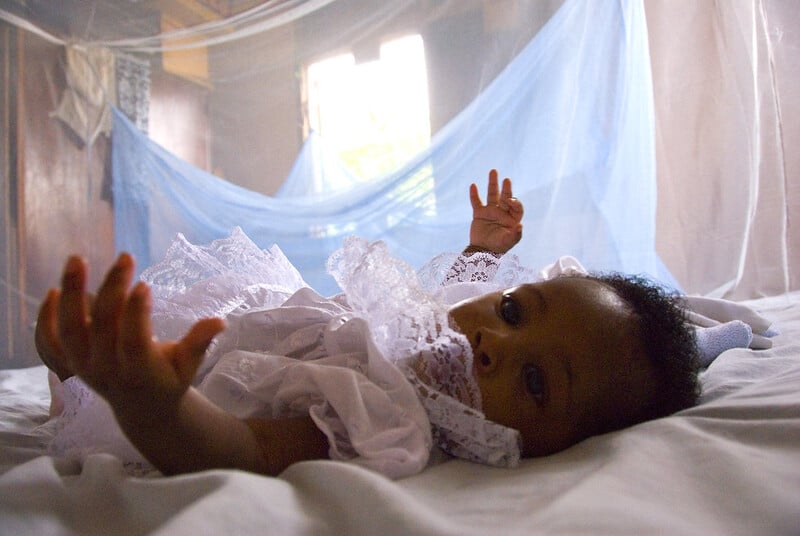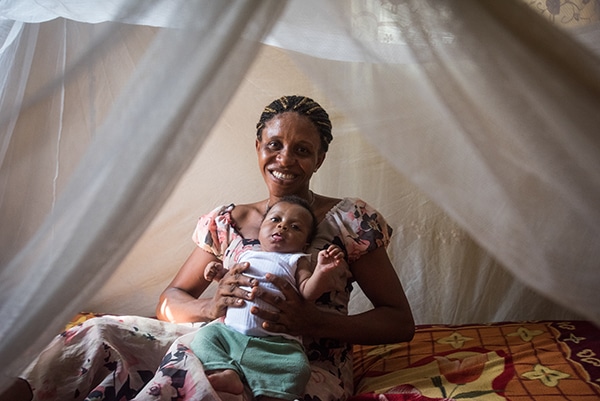Often, when the Johns Hopkins Center for Communication Programs is called on to create malaria prevention strategies, program staff find that there is little data about malaria behaviors in the countries where they work.
There might be some statistics about how many people slept under an insecticide-treated bed net the night before and how many parents of young children with fevers sought malaria testing. But most countries have data gaps around the factors that motivate or influence the use of malaria prevention measures and treatment. These gaps can keep malaria programs from successfully protecting people.
Enter the Malaria Behavior Survey, created by the Johns Hopkins Center for Communication Programs and the U.S. President’s Malaria Initiative to answer those pressing questions in African countries where malaria is a problem. National malaria control programs and other stakeholders helped to refine the survey to ensure that it produces the exact type of data they need to reduce the threat of malaria in their countries.
“If we know what’s driving behaviors, we can design programs specifically influencing those things which lead to changes in behavior and can save lives,” says CCP’s Gabrielle Hunter, a senior program officer who specializes in malaria. “The data from these surveys can help us do that. It’s the most comprehensive look at malaria behaviors that you will find.”
The first Malaria Behavior Survey, which gathered information from nearly 8,700 people, was completed in 2019 in Côte d’Ivoire. It asked questions about the factors that — according to behavior change theories — influence behaviors, such as seeking care for children with fever (a sign of malaria), sleeping under a mosquito net and taking malaria-prevention medication during pregnancy.
The survey revealed that people were 90 percent more likely to seek immediate and appropriate care for their feverish child if they believed others in the community were also doing this. People were also more likely to seek prompt care for their feverish child if they had a positive attitude toward care-seeking, talked about malaria with their spouse, thought community health workers are good at treating malaria in children or believed that antimalarial drugs would be available at the health center.
“If people believe that a significant number of other people in their community are doing X behavior, they’re much more likely to it themselves,” Hunter says. “And we can use the insights from the survey to design strategies and programs that focus on the more significant drivers of behaviors.”
These data were instrumental in developing the Côte d’Ivoire National Malaria Control Program’s 2021-25 malaria communication plan.
Dr. Monne Thérèse Bleu Bomin works with the Ministry of Health and Public Hygiene in Côte d’Ivoire. Having these data, she says, will help bring her country closer to eliminating malaria, now that they better understand what motivates people to protect themselves from the disease and seek care when sick.
“The Malaria Behavior Survey lets us be targeted in our strategies, focusing on the most significant determinants driving malaria behavior,” she says.
Two more surveys, in Cameroon and Sierra Leone, have since been fielded, and several more are on track to begin in 2021, including in the Democratic Republic of Congo, Liberia, Malawi, Tanzania, Benin and Ghana. The surveys are part of the CCP-led Breakthrough ACTION project.
In Sierra Leone, the survey found that in one district, for example, people were nine times more likely to use a mosquito net if they felt confidence in using it correctly. This suggests that officials should make sure that people understand exactly how to use nets properly in order to boost the chances that people will use them. The findings of the survey in Sierra Leone are already being put into practice, helping to inform a nationwide distribution of bed nets in 2020 and an upcoming indoor residual insecticide spraying campaign.
The Malaria Behavior Survey is a cross-sectional survey with structured questionnaires administered to a random sample of women and men of reproductive age, as well as a household questionnaire, where researchers go door-to-door to gather information. The survey is fielded in the rainy season or shortly afterwards, with representative sampling across defined study zones in each country. While designed as a formative assessment tool, if implemented every three-to-five years, the Malaria Behavior Survey can be used to capture trends over time.
“Being able to see how our strategies have helped, over time, to improve net use or care-seeking behavior for children with fevers would only help us create even better interventions and save more lives,” Hunter says.





